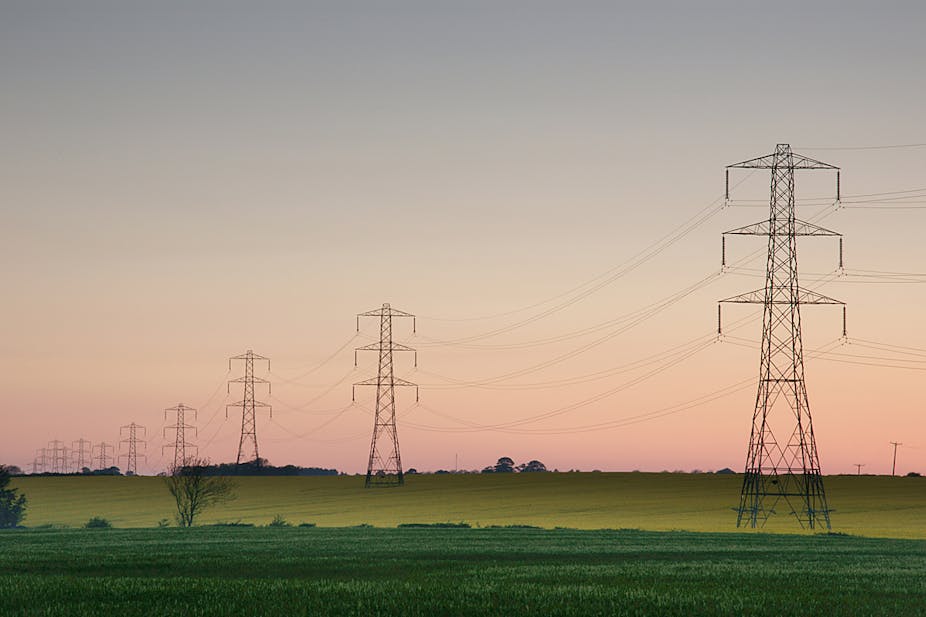On August 31, the Australian Financial Review reported that “Power-hungry states face energy shock”. Another article on page ten read “Electricity price explosion predicted”.
So, what is going on? Should we expect price rises and blackouts? If so, why; and what can we do about it?
Reporting the future
These articles are based on recently released reports:
-
The 2011 Electricity Statement of Opportunities, prepared by the Australian Energy Market Operator (AEMO)
National Electricity Market Modelling: Predicting changes to prices with changes to electricity contracting levels, a report prepared by economic consulting firm ACIL Tasman for the Energy Supply Association of Australia.
AEMO’s Electricity Statement of Opportunities (ESOO) is updated annually and looks at the next ten years for the National Electricity Market (NEM) jurisdictions – Queensland, New South Wales, Victoria, South Australia, Tasmania and the Australian Capital Territory.
The ESOO documents possible future trends in electricity demand and the supply industry’s ability to meet those trends. Predicting future demand is more difficult this year for AEMO thanks to rapid but uncertain change in the industry.
This change is caused by a number of factors:
Australia’s “two-speed economy” means growth in future demand is uncertain and may vary significantly between the NEM jurisdictions.
If more effective policies to increase efficiency and reduce peak demand are introduced, this could make a significant difference.
Rising electricity prices have increased consumer interest in reducing their electricity bills.
Existing renewable energy policies have driven significant investment in wind and solar generation, both of which exploit non-storable energy fluxes (wind can not be “stored” in the same way that coal can). This investment introduces a new challenge for the electricity industry. How will it manage the reduced value of “base-load” coal-based generators compared to flexible gas-based generators?
Volatile policies leading to price uncertainty
Carbon pricing policies at Federal and State levels could significantly change the competitive advantage between the various electricity generation technologies. This will affect when existing power stations are retired and what is built to replace them.
But the volatile politics of carbon pricing policy create great uncertainty about the practical implications of such policy, for both the existing generation and what might be built next.
State-level planning policies for energy projects are also volatile – take coal seam methane and wind farm projects for instance. This is partly due to the speed with which new technologies are being introduced.
Finally, last year’s privatisation process in New South Wales brought significant structural change to the NSW electricity industry and more change might be afoot.
So do we face price rises and blackouts?
ACIL Tasman’s report suggests the Federal Government’s proposed carbon pricing policy might reduce derivative trading associated with the National Electricity Market spot market.
Derivative trading helps to reduce average prices and support timely investment in new generating capacity. As ACIL Tasman note, reduced trading may push up prices.
In turn, this might result in higher retail electricity prices and/or lower reliability of supply.
Prices may also go up because of low-emission generation, increasing fuel costs due to export competition and increasing network costs.
Let’s get political consensus on energy efficiency
Given these predictions, what should electricity consumers do?
We will have to think more cleverly about our electricity use if we want to reduce the inevitable increases in our electricity bills and help prevent blackouts.
Reducing electricity consumption and maximising flexibility in timing will be key – the latter because “time-of-use” electricity tariffs are likely to become the norm.
We should choose apartments or freestanding homes that are designed and built to minimise summer cooling and winter heating requirements and then learn how to live in them to capture those potential savings.
We should purchase efficient electrical appliances and be careful in how and when we use them – particularly air conditioners on hot summer or cold winter days. We should apply such thinking at work as well.
As citizens, we should require local, state and federal governments to implement effective policies that support us in making such decisions and hold them accountable if they don’t.
Electricity prices will rise regardless of climate policy – due to rising fuel, material and equipment costs – so this is an area in which political consensus should be possible.
As electricity consumers, we should demand that political parties work together on this issue and avoid making it a political battleground.

